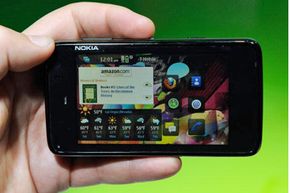Transistors and the Computer Age
Once mass-produced transistorized hearing aids and radios became realities, engineers realized that transistors would replace vacuum tubes in computers, too. One of the first pre-transistor computers, the famous ENIAC (Electronic Numerical Integrator and Computer) weighed 30 tons, thanks in part to its more than 17,000 vacuum tubes. It was obvious that transistors would completely change computer engineering and result in smaller machines.
Germanium transistors certainly helped start the computer age, but silicon transistors revolutionized computer design and spawned an entire industry in California's aptly-named Silicon Valley.
Advertisement
In 1954, George Teal, a scientist at Texas Instruments, created the first silicon transistor. Soon after, manufacturers developed methods for mass-producing silicon transistors, which were cheaper and more reliable than germanium-based transistors.
Silicon transistors worked wonderfully for computer production. With smart engineering, transistors helped computers power through huge numbers of calculations in a short time. The simple switch operation of transistors is what enables your computer to complete massively complex tasks. In a computer chip, transistors switch between two binary states -- 0 and 1. This is the language of computers. One computer chip can have millions of transistors continually switching, helping complete complex calculations.
In a computer chip, the transistors aren't isolated, individual components. They're part of what's called an integrated circuit (also known as a microchip), in which many transistors work in concert to help the computer complete calculations. An integrated circuit is one piece of semiconductor material loaded with transistors and other electronic components.
Computers use those currents in tandem with Boolean algebra to make simple decisions. With many transistors, a computer can make many simple decisions very quickly, and thus perform complex calculations very quickly, too.
Computers need millions or even billions of transistors to complete tasks. Thanks to the reliability and incredibly small size of individual transistors, which are much smaller than the diameter of a single human hair, engineers can pack an unfathomable number of transistors into a wide array of computer and computer-related products.
